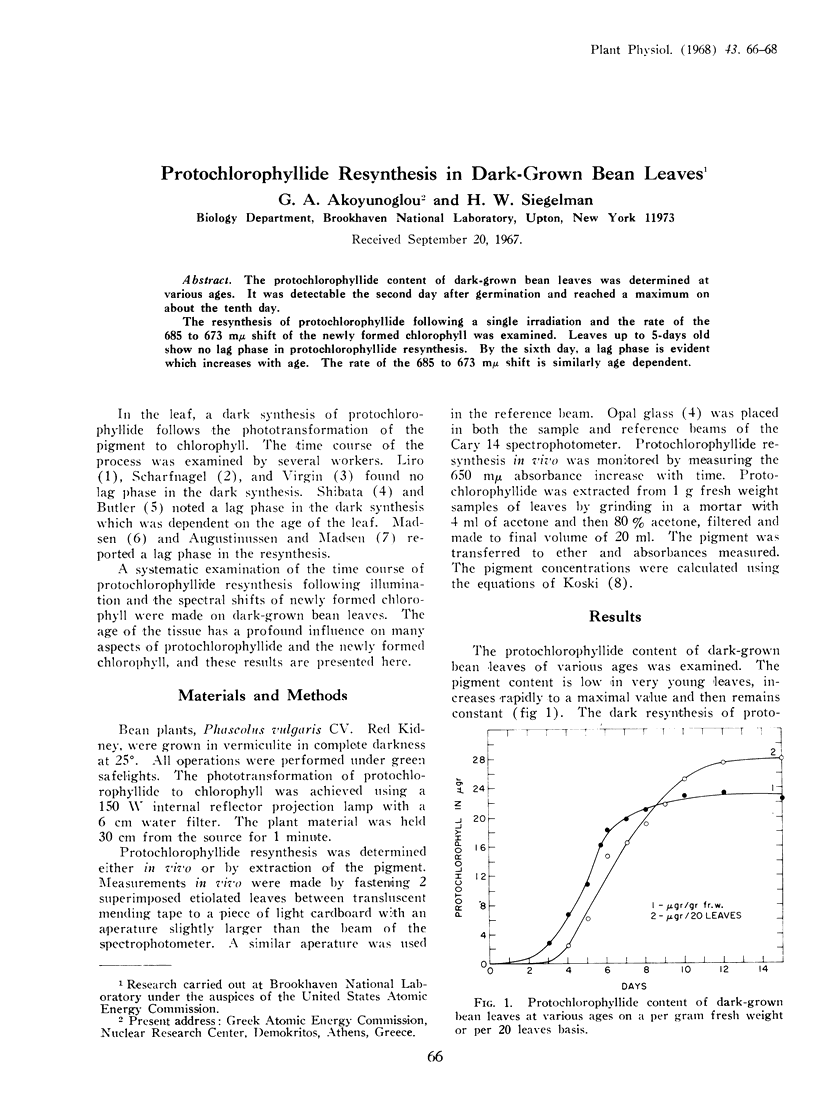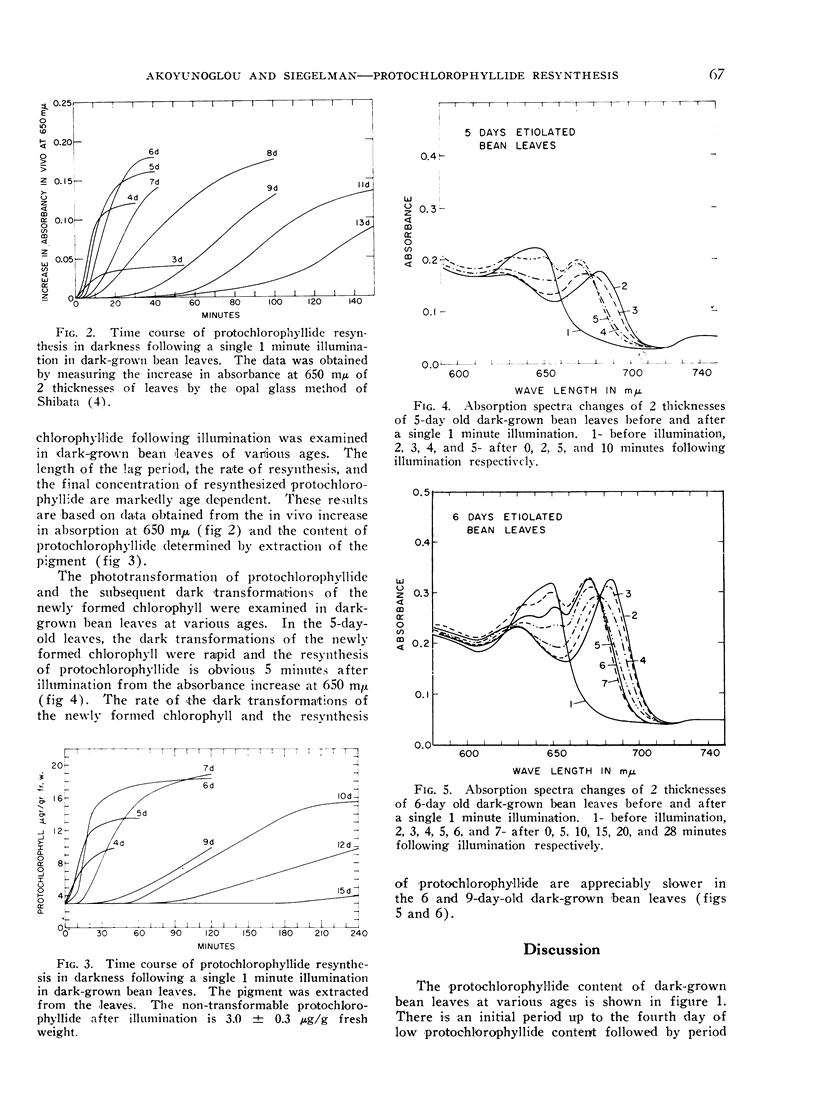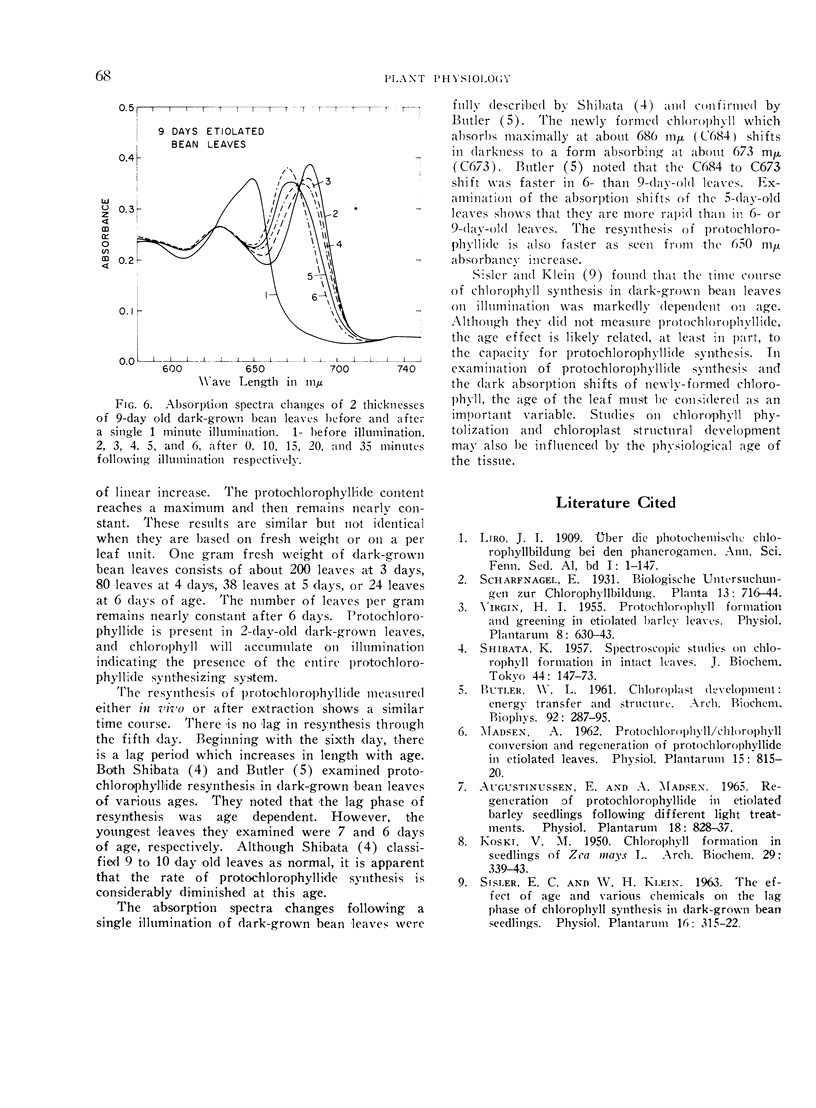Abstract
The protochlorophyllide content of dark-grown bean leaves was determined at various ages. It was detectable the second day after germination and reached a maximum on about the tenth day.
The resynthesis of protochlorophyllide following a single irradiation and the rate of the 685 to 673 mμ shift of the newly formed chlorophyll was examined. Leaves up to 5-days old show no lag phase in protochlorophyllide resynthesis. By the sixth day, a lag phase is evident which increases with age. The rate of the 685 to 673 mμ shift is similarly age dependent.
Full text
PDF


Selected References
These references are in PubMed. This may not be the complete list of references from this article.
- BUTLER W. L. Chloroplast development: energy transfer and structure. Arch Biochem Biophys. 1961 Feb;92:287–295. doi: 10.1016/0003-9861(61)90351-4. [DOI] [PubMed] [Google Scholar]


